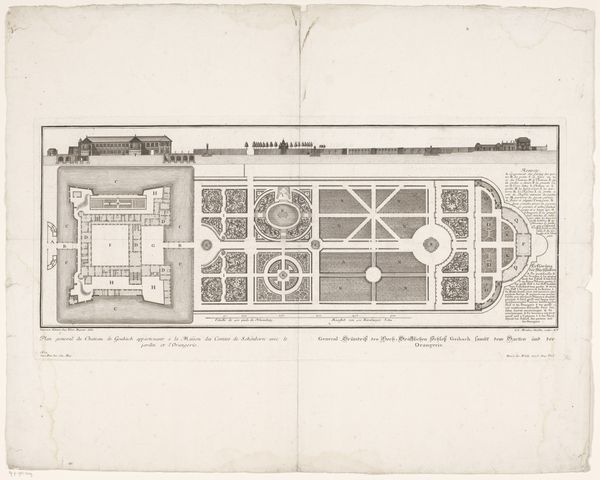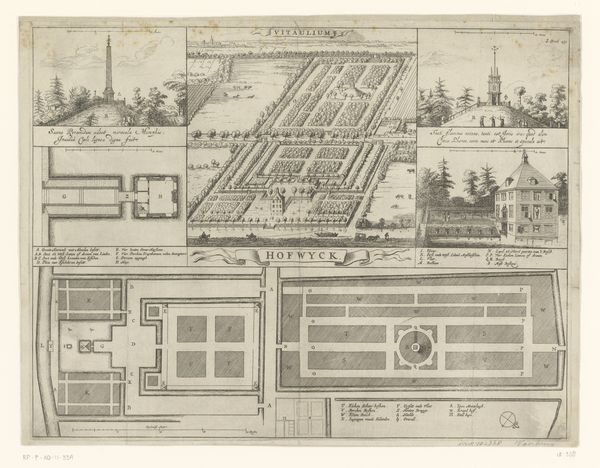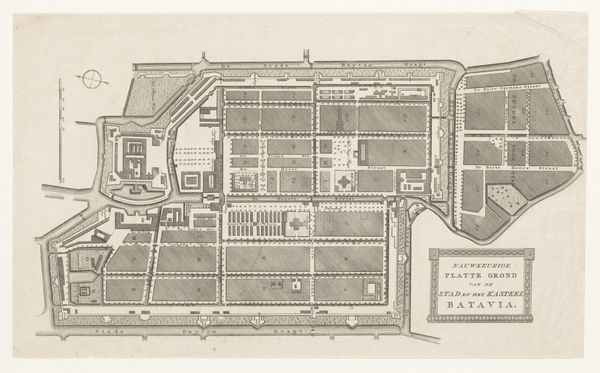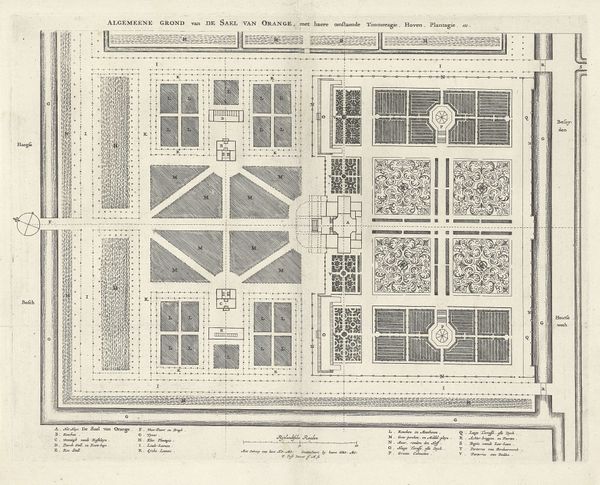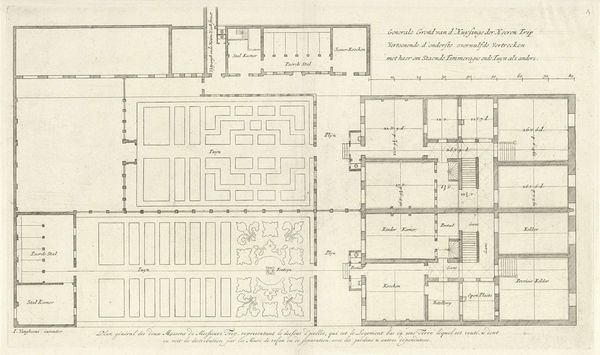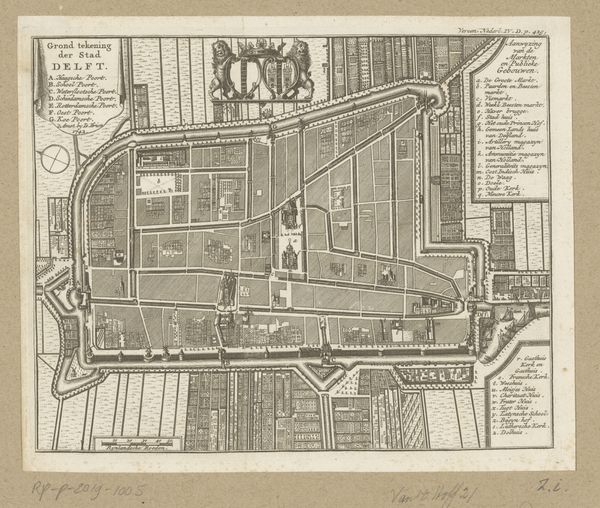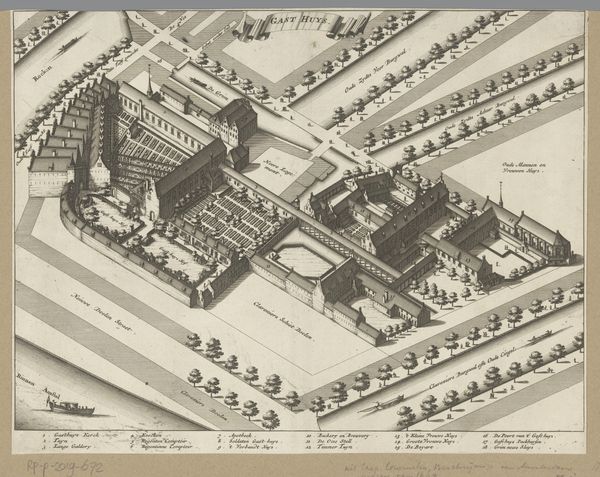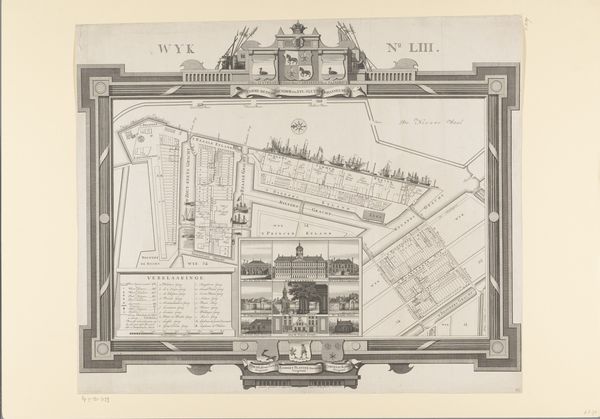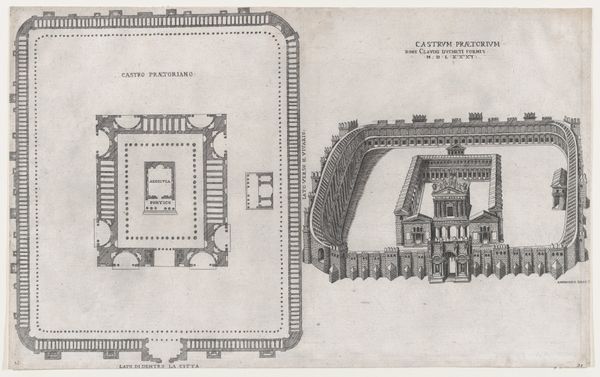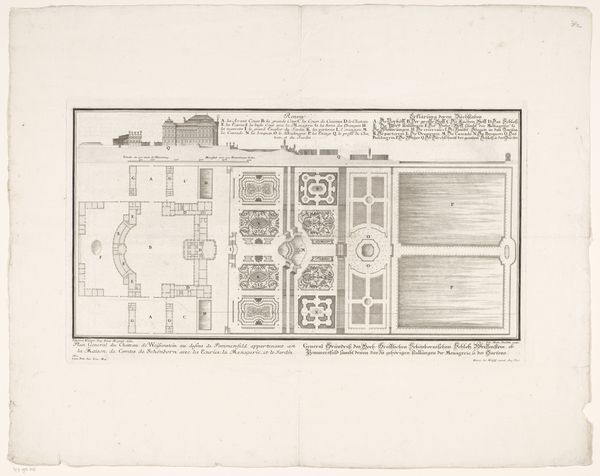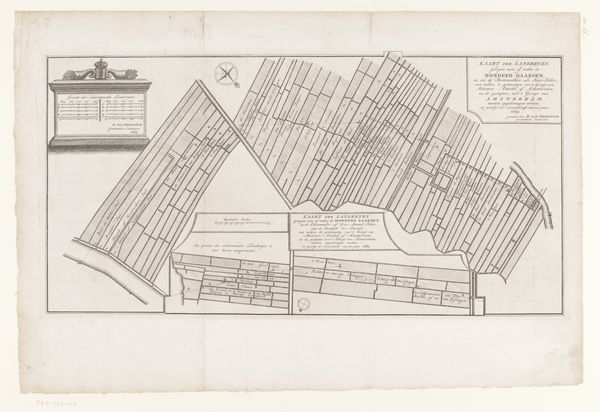
print, engraving
#
baroque
# print
#
landscape
#
geometric
#
line
#
cityscape
#
engraving
Dimensions: height 261 mm, width 416 mm
Copyright: Rijks Museum: Open Domain
Curator: Let’s explore this fascinating print from 1683: “Plattegrond van de tuin bij het Palazzo del Quirinale,” created by Giovanni Battista Falda. It’s currently held in the Rijksmuseum. Editor: My first impression is order; an incredibly detailed order, like an all-seeing god's meticulous garden plan. The line work, of course, gives it that exacting feel. Curator: It is indeed a testament to Baroque ideals of control, visually laying out the relationship between power, nature, and the elite. Falda was documenting and promoting a vision of Rome synonymous with Papal authority, the Quirinale being the papal summer residence. Editor: Look at the gardens themselves; this geometric arrangement seems to take precedence over any sense of organic life. The pattern repeats almost obsessively. Semiotically speaking, each miniature square represents the subjugation of nature. Curator: Precisely. Landscaping at this time became a theatrical stage upon which powerful men displayed their control of earthly matters, a means to reinforce their divine mandate within a Counter-Reformation context. It spoke volumes about how resources were deployed and for whose pleasure. Editor: So this isn’t merely a literal depiction but a coded language. We can read the map, but to truly understand it, we must consider what it signified within the society that produced it. This bird’s-eye perspective asserts an assumed right to survey and command, both spatially and socially. Curator: The choice of engraving underscores its purpose. Printmaking allowed wider dissemination of such powerful imagery, influencing perceptions of power. It offered aspiring nobles insight into what was considered tastefully impressive. Editor: Seeing it as more than just aesthetic—the way geometric formality and dissemination combine to subtly buttress political systems. It's a powerful combination. Curator: Reflecting on this work deepens our understanding of urban representation as an instrument of governance. It invites crucial conversations. Editor: Indeed. It's compelling how an object seemingly dedicated to rational elegance, through attention to line and form, becomes such a portal to social power relations.
Comments
No comments
Be the first to comment and join the conversation on the ultimate creative platform.
